Auke Visser´s Esso UK Tanker's site | home
Iroquois - (1907-1946)
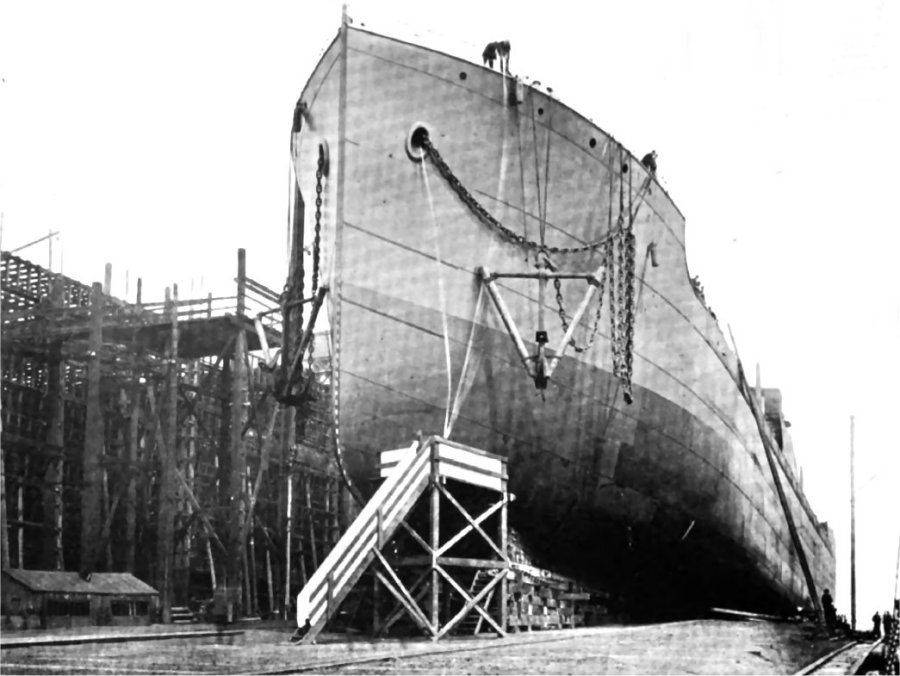
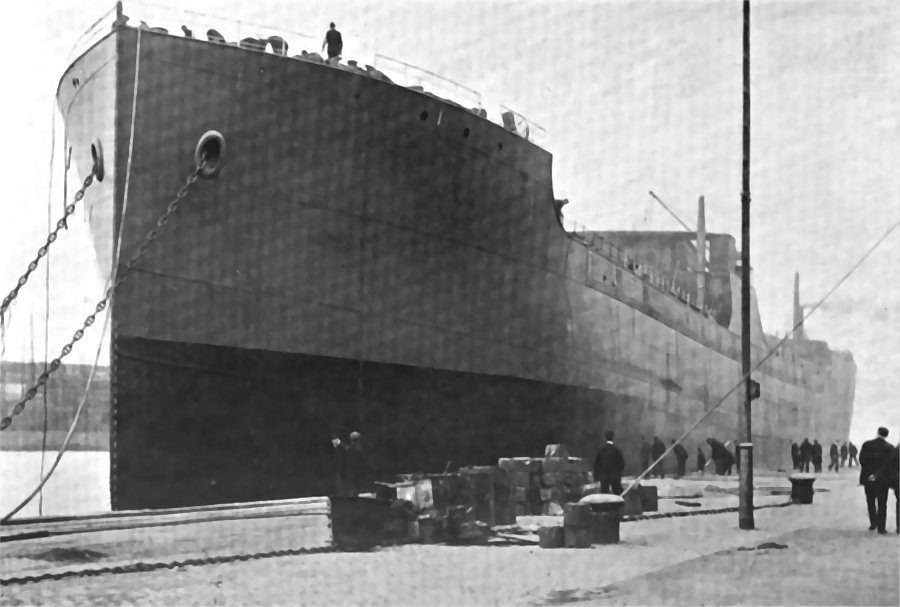
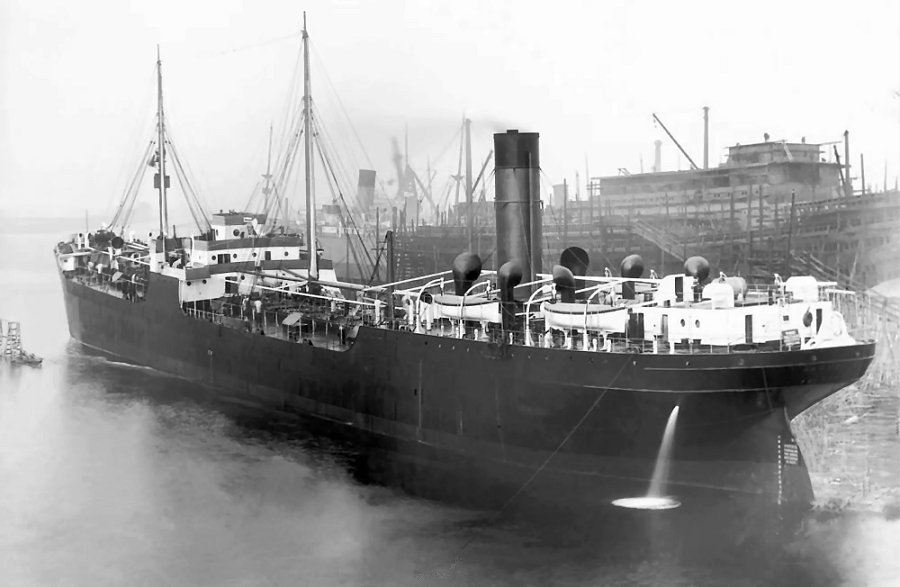
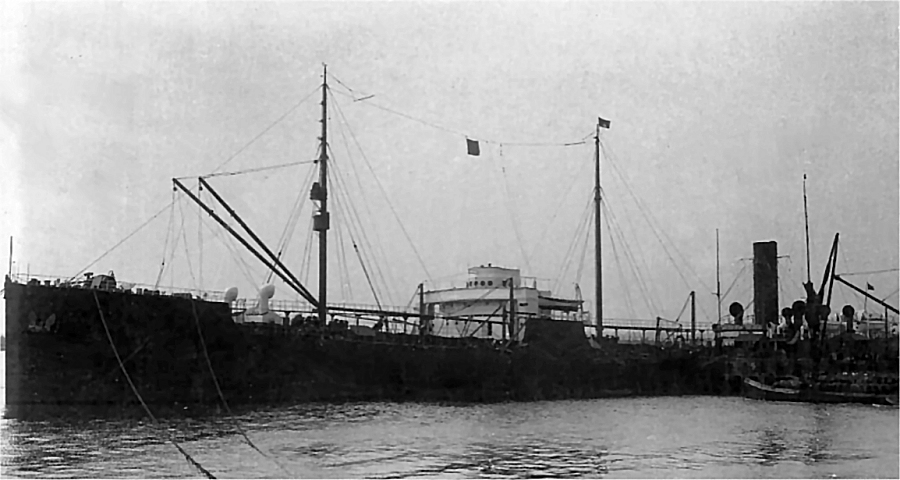
In his book “Spirit of the IROQUOIS”, Len Taphouse mentions ‘ When IROQUOIS was partnered with towing her “barge” NAVAHOE
between 1908 and 1930, the large “oil barge” NAVAHOE discharged at Shellhaven on the Thames, whilst IROQUOIS went further
upriver to discharge at Purfleet’. The fact that there is a Thames sailing barge on the right would point to the location as being at
Purfleet.
( Photo Michael Pryce Collection )
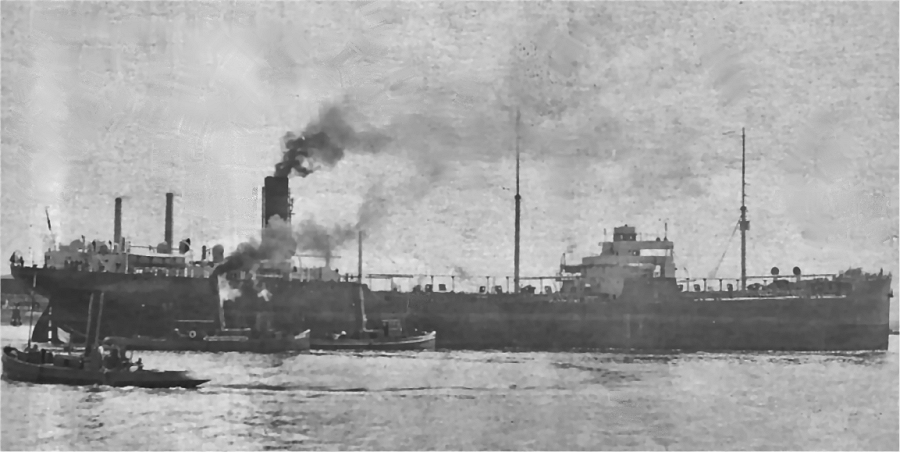
( Photo Michael Pryce Collection )
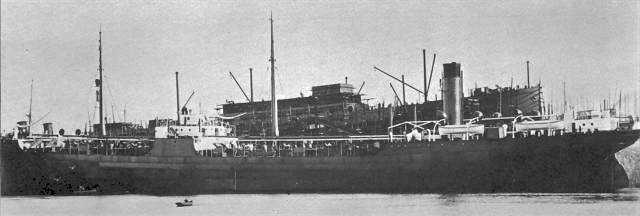
"Iroquois".
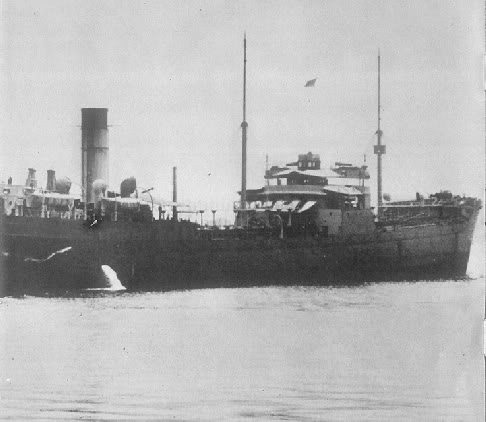
"Iroquois".
"Iroquois" - 10.1907 - 9.202 GT
Built by Harland & Wolff Ltd., Belfast.
Measurements :
467 feet lenght x 60 feet breadth.
11.800 DWT.
Engines : Quadrupple Expansion Steam engine.
12.1946: Scrapped by Armon, Young & Co., Dalmuir.
It was the first largest tanker fitted with two screws.
Aditional information Starke & Schell-registers.
IROQUOIS BR 2Q (aft) (10)
9,202 Anglo-American Oil Co., Ltd., Belfast (London) 476.3 x 60.3
Tanker Harland & Wolff, Ltd., Belfast (10) #385 124667
Broken up at Troon, 1st quarter 1947, by West of Scotland Shipbreaking Co., Ltd.
The story off the "Horse and cart".
The tanker Iroquois, with propelling machinery aft, had a housing on the poop in which there was a towing winch with
a drum capacity of 500 fathoms of seven-inch wire. A steam valve controlled the winch, easing a taut wire and then
picking up the slack again. With engines of 5,000 IHP she could travel at 11-12 knots.
They where known all these years as the “Horse and Cart”.
The Navahoe was rigged as a six-masted “bald-headed” schooner. She had quite powerful engines powered by a large
single-ended boiler, the uptake from the furnaces being through the foremast. The engines were not for propelling, but
for pumping and heating. As with the Iroquois, steam was also supplied to a towing winch and there was also a steam
winch at each mast for hoisting sails, The six masts-fore, main, mizzen, jigger, spanker and driver-each carried a fore
and aft sail. The boom length was sixty-five feet, the gaffs sixty feet.
The first voyage of the pair began on 1st March, 1908, from Belfast to the United States and, with but one exception-that
of a voyage to Colon and Sabine-the partnership continued in the North Atlantic until 30th May, 1917-nine and three-quarter
years. Up to that time 148 crossings were made, averaging sixteen each year at a speed of just under 9 knots.
But the long period of nine and three-quarter years had to be broken, for the First World War was then at its peak, with
stringent convoy organisation, hardly suitable for a big-ship tow such as the Iroquois and Navahoe, So the ships were
withdrawn and placed on a Texas-Halifax, Nova Scotia, run, averaging just over 10 knots in the sixteen voyages made
between June 1917 and November 1918. By the end of the war some 290,000 tons of oil had been moved for the Admiralty
in just under eighteen months.
With the end of the war came release front Admiralty service and the two vessels left Baton Rouge on 24th December, 1918,
bound for London. With other tankers they continued working in the Baton Rouge-London River service, although at the end
of 1925 there were the beginnings of the great world depression, with all types of shipping laid up in countless rivers and
backwaters and including many tankers. However, the Iroquois and Navahoe were able to continue their work, mainly between
Baton Rouge and Thames Haven, until their last arrival on 17th September, 1930.
Then, after nearly twenty-three years, the Navahoe went off to act as a floating oil store at the mouth of the San Juan River in
Eastern Venezuela. The oil terminal was at Caripito, some sixty miles up river where the ever-larger tankers were too deep to
load down to their marks. So they topped off from her 90,000 barrels storage before sailing on to deep seas. But this was only
a temporary measure. Loading conditions improved and after completing the cargoes of hundreds of tankers, she was towed
out by one of the tankers in the summer of 1936 and scuttled in 400 fathoms.
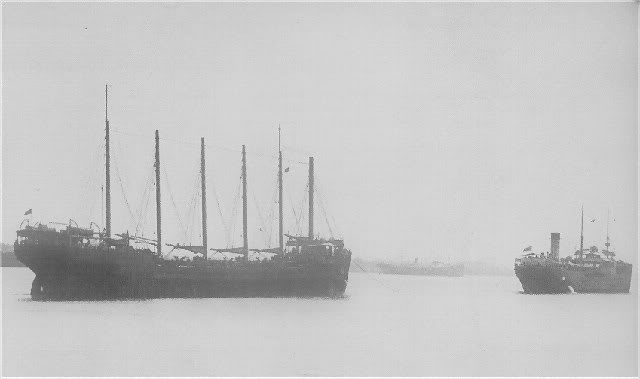
"Horse and Cart", "Navahoe" on the left and "Iroquois" on the right.
"Iroquois" in WW2
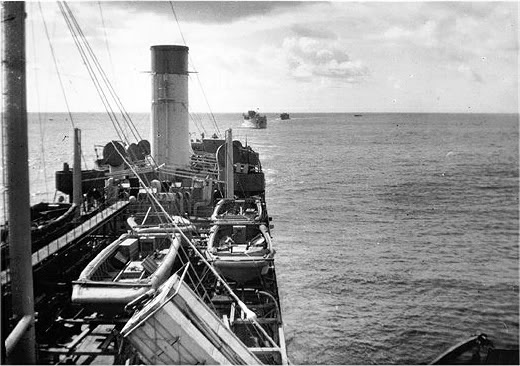
"Iroquois" towing concrete barge "Feldspar" of 8500 tons, floating torpedo repair barge of 3000 tons and steel barge 300 tons.
Voyage was from Pearl Harbour to Eniwetok, Marshall Islands and thence to Ulithi, Caroline Islands.
Length of tow was 5,500 feet.
Distance 2548 miles, average speed 7.06 knots
1376 miles, average speed 7.36 knots
My father Captain J.H.Palmer-Felgate was master of the "Iroquois" at this time.
( Information and photo thanks to Martin Palmer-Felgate )